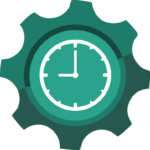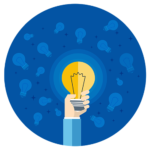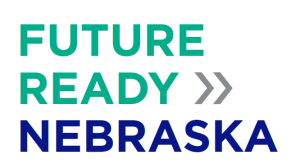Use of Space & Time

Goals, Action Steps and Progress
Recommended Action 4. Provide resources and flexible scheduling opportunities to allow for deeper level application of student learning and allow time for students to create and collaborate around the learning. (Q2 2020, Districts)
Recommended Action Step 2. Demonstrate multiple ways technology is leveraged to provide an enriched learning environment for students and staff. (Q1 2019, NDE, ESUCC, FRNC, ESU’s & Districts)
Recommended Action Step 3. Expand and communicate statewide projects that demonstrate successful personalized learning outcomes. (Q3 2019, NDE, FRNC & ESUCC)
Using the Future Ready Goals and Action Steps
Each of the FRNC gear groups has written a comprehensive set of goals and provided recommended action steps supporting their goals to help move digital learning and education technology forward in Nebraska. To assist districts and schools in aligning their work to this plan, icons representing common state and national education initiatives were created and then aligned to each goal and action step. The table below gives guidance to each of the icons used and which initiative the icon represents. In many cases, the goals and action steps identified support work on multiple initiatives and each icon is shown to indicate these matches.
| This icon indicates that the Goal or action step is tied to an AQuESTT tenet or work that supports an AQuESTT tenet. | |
 |
This icon indicates that the Goal or action step is tied to ESSA either as a support of the act or because it is tied to available ESSA monies or grant opportunities. |
| This icon indicates that this Goal or action step is directly linked to a Goal or action step of another Future Ready Gear. | |
 |
This icon indicates that this Goal or action step is tied to a recommendation that is found within the 2017 National Education Technology plan. |
 |
This icon indicates that this Goal or action step supports a goal or advances the work of a Nebraska State Board of Education goal. |
Annual Timelines
| Use of Space and Time 3 Year timeline | ||||
| 2018 | ||||
| Q1: Jan. – March | Q2: April – June | Q3: July – Sept. | Q4: Oct. – Dec. | |
| UST1 Learning Environment | ||||
| UST2 Learning Pedagogy | AS 1. Create awareness and encourage use of a variety of digital and distance learning opportunities | |||
| UST3 Exemplars | AS 1. Research and provide effective implementation models of online and blended courses | |||
| Use of Space and Time 3 Year timeline | ||||
| 2019 | ||||
| Q1: Jan. – March | Q2: April – June | Q3: July – Sept. | Q4: Oct. – Dec. | |
| UST1 Learning Environment | AS 1. Explore physical environment changes to create richer learning experiences | AS 2. Provide extended learning opportunities with platforms for anywhere anytime learning | ||
| UST2 Learning Pedagogy | AS 2. Provide educational experiences and assessments that ensure mastery of content standards using digital tools | AS 3. Access to AP, Dual Credit and industry certification | ||
| UST3 Exemplars | AS 2. Demonstrate multiple ways technology is leveraged to provide student and staff centered learning environments | AS 3. Expand & communicate statewide projects that demonstrate successful personalized learning outcomes | ||
| Use of Space and Time 3 Year timeline | ||||
| 2020 | ||||
| Q1: Jan. – March | Q2: April – June | Q3: July – Sept. | Q4: Oct. – Dec. | |
| UST1 Learning Environment |
AS 3. Develop coursework that allows flexibility in pacing and sequencing |
AS 4. Resources for flexible scheduling opportunities | ||
| UST2 Learning Pedagogy | ||||
| UST3 Exemplars | ||||



